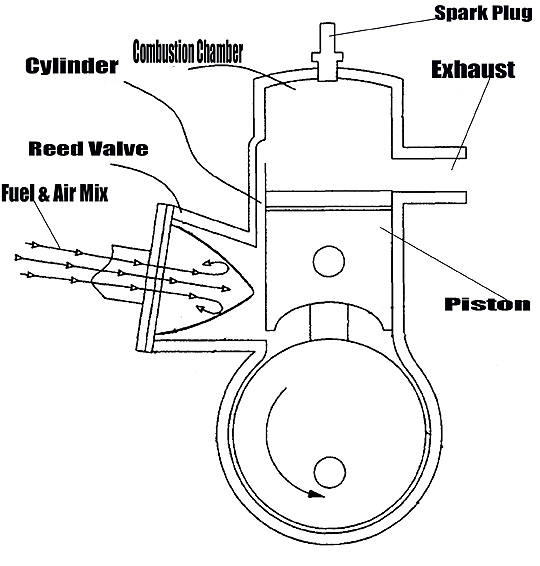ATV Tech: The Mysterious Reed Valve
In this day of four-stroke domination, many riders will never have had the experience of wringing out a high-revving two-stroke quad. This is a shame because two-strokes created a type of power delivery that even the peppiest four has difficulty reproducing. Best of all it managed to do it by weighing less, containing far fewer moving parts and at a fraction of the cost to manufacture/ maintain.
Even though brand-spanking-new 2-stroke ATVs exist only in the hallowed halls of rider memory, the technology that makes them tick still deserves closer examination. One of the bits unique to the “two-smoke” is the reed valve (or as its often called, “reeds”).

A reed valve is actually quite simple by design, consisting of flexible petals mated to a block connecting the carb to the top-end of the engine.
In its simplest form, the reed acts as a check valve; keeping fuel & air from being pushed into the intake tract. In other words the reed valve opens to allow fuel to enter the top end from the carburetor then closes up shop so that the fuel & air mix stays put to be combusted (rather than get spit back when the piston comes sailing up).
While this sounds like a fairly demanding job, the actual process occurs quite naturally. Rather than rely upon mechanical means of operation, the reed is all about using something that surrounds us at all times: atmospheric pressure.
When the piston plummets down its bore, a low-pressure zone on the engine side is created, causing the reed petals to flex open. Fuel and air then pass through the reed block. Once the piston returns upward, that lower pressure finds itself suddenly to the intake tract side and as such the petals are again forced to close tight.

Early reed petals were constructed of metal but like most components, have evolved to incorporate advances in technology, which have made them both lighter and stronger over time: From stainless steel to fiberglass to most recently, carbon fiber.
Modern systems like Moto Tassinari’s VForce3 reed valve system have gone to great lengths toward becoming a true ‘bolt-on’ modification (opposed to an engine tear-down affair like in years past). With technological advances like snap together construction, reed petal replacement incredibly quick and easy. This is certainly a good thing considering your reeds open and close 133 times per second at 8000 rpm!
